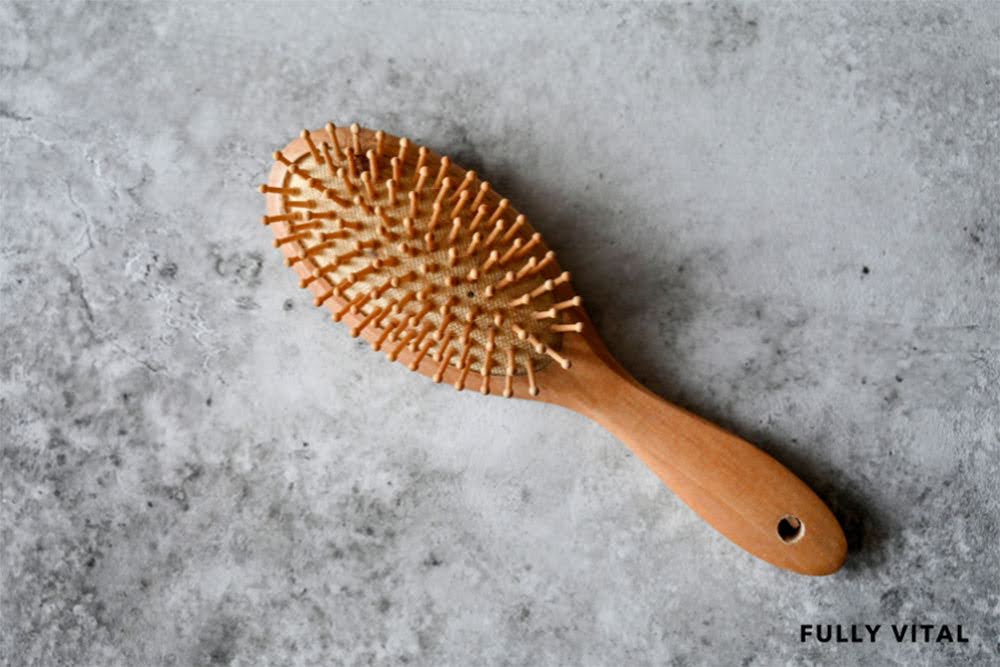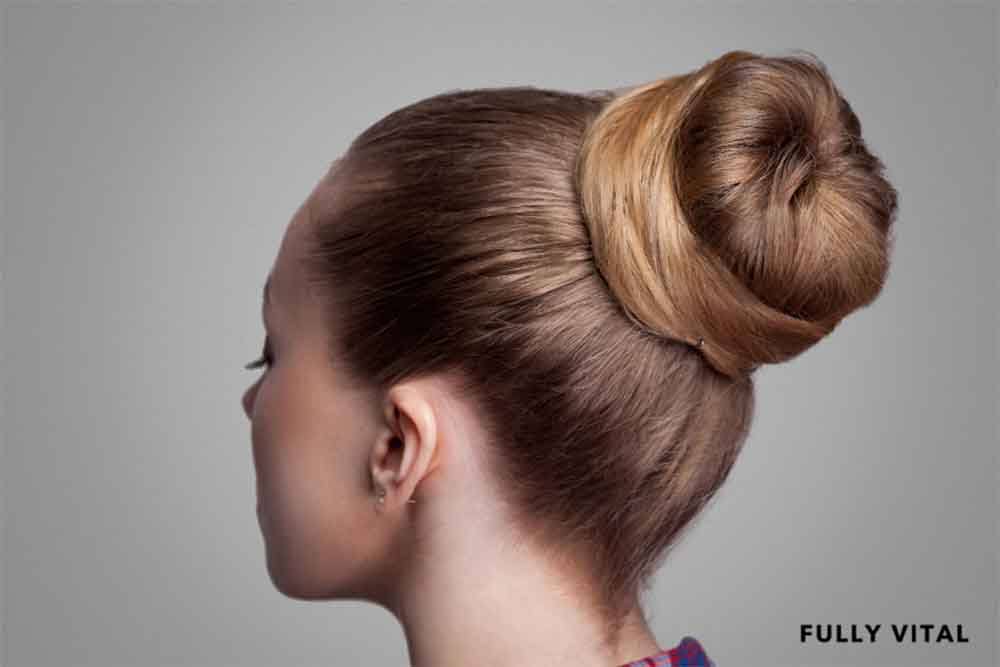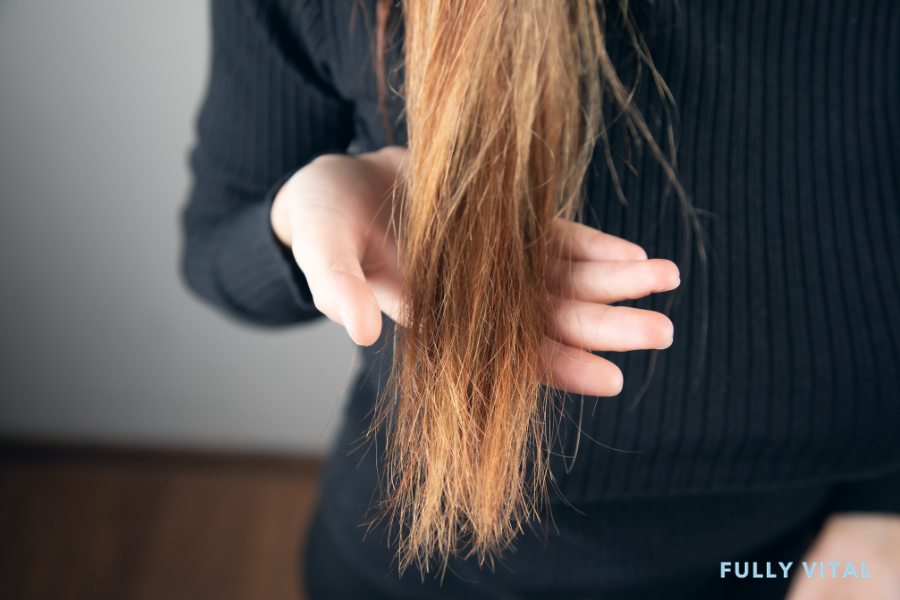
Hairbrush Maintenance 101: How Often Should You Replace Your Hairbrush?
If you're like me, and let's face it, who isn't a little guilty of this - we hang onto our hairbrushes until they are hanging by a literal hair.
But as we know at Fully Vital, just like the hair on our heads, the tools we use to groom it need some love too.
Ever wondered just how often you should be replacing that trusty hairbrush of yours? Yes, they too have an expiration date of sorts.
Taking care of our locks is more than just giving them a good scrub in the shower and hoping for the best.
It's about the whole shebang – shampoo, conditioner, treatments, and you guessed it – how often you change your hairbrush.
As someone who's always on the quest for that perfect hair day, let's talk about keeping that trusty sidekick in your hair care arsenal in top-notch condition.
At Fully Vital, our mission is to create powerful science-backed hair growth products that can help you slow down and reverse the aging of your hair.

I LOVE MY HAIR NOW
FullyVital hair serum and hair vitamins made tremendous improvements in my hair. I truly love my hair now.
Dorit S.,
Understanding The Importance Of Hairbrush Maintenance
Keeping your hairbrush clean is crucial for hair health.
Each use collects oils, hair, and product residue.
Using a dirty brush re-applies this gunk, potentially harming your hair.
Regular cleaning prevents breakage and ensures hair growth products work effectively.
Clean your brush every few weeks and replace it every 6 to 12 months, or if it shows wear like bent bristles.
This maintenance is key for healthy, strong hair.
Discover A New Era Of Hair Vitality With Fully VitalExperience the pinnacle of hair care innovation at Fully Vital, where your quest for ageless, vibrant hair finds its answer. Harness the transformative power of our hair growth products and embrace a future where your hair doesn't just grow, it thrives. Here's why Fully Vital should be the cornerstone of your hair care routine:
Embrace the harmony of science and nature. Don't let age dictate the life of your hair. With Fully Vital, you hold the secret to a healthier, more confident relationship with your locks. Now is the moment to redefine your hair's destiny. Unlock the secrets to enduring hair vitality. Take the first step towards ageless hair today. Embrace Fully Vital's promise and transform the future of your hair. |
Types Of Hairbrushes And Their Durability
You know, we all have our favorite types of hairbrushes.
Some of us swear by paddle brushes, while others can't live without their round, vented pals.
But alongside how comfy they feel when running through our tresses, we should also think about how long they last.
So let's break it down.
- Paddle Brush: this one's a real trooper. It’s great for smoothing out hair and tackling those tough tangles. With its wide and flat surface, it's pretty sturdy by design. If you take good care of it, it can last a good year before showing signs of wear and tear. That doesn't mean you should skip cleanings, though!
- Round Brush: the go-to for that blowout that makes you feel like you just stepped out of a salon. However, because of the tension they endure with each twirl and the heat they often face, they might need a replacement closer to the 6- to 8-month mark.
- Vented Brushes: They're designed to allow air to pass through, speeding up drying time. They can be fragile, though, especially if you’re a little heavy-handed. So, keeping an eye on those bristles is crucial, as you might find they need swapping out every 6 months or so to ensure they're doing their best work.
- Boar Bristle Brushes: These guys are a bit more on the delicate side but are excellent for distributing natural oils and achieving a shiny finish. However, they can be a bit of a diva when it comes to maintenance. They need gentle cleansing and might not last as long as synthetic brushes. Typically, you’d look at replacing them every 7 to 10 months.
- Detangling Brushes: either. They may be small but don't be fooled; they can pack a punch. Since they're often made of plastic and designed to be pretty durable, you can expect these to last around a year with the proper care.

The Effect Of Hair Type And Grooming Habits On Hairbrush Lifespan
The lifespan of your hairbrush depends on your hair type, brushing frequency, and grooming habits.
Thick, curly hair may wear out brushes faster, possibly needing replacement around 6 months.
Fine or straight hair might extend brush life up to a year.
Heavy use of hair products leads to more residue, requiring frequent cleaning and possibly hastening brush degradation.
Brushes used on wet hair risk moisture damage and mildew, especially if not dried properly.
Rough brushing or using brushes with high heat can also shorten their lifespan.
Gentle use and proper care can significantly extend a brush's usability.
Daily Cleaning: An Essential Practice For Hairbrush Longevity
Incorporating daily cleaning into your haircare routine can significantly extend the life of your hairbrush.
Daily cleaning involves:
- Post-Use Hair Removal: After each use, remove all hair strands from the bristles, using a pen or comb end to lift them away.
- Weekly Deep Cleaning: Once a week, use warm soapy water (mild shampoo is ideal) for a gentle wash. Dip and swirl the bristles in the water to loosen buildup but avoid submerging the entire brush to prevent damage, especially if it has a padded base.
- Scrubbing: Use an old toothbrush for a thorough scrub, targeting each bristle to remove stubborn residues.
- Rinsing and Drying: Rinse under running water and then dry the brush with bristles facing down to ensure water drains away and doesn’t get trapped at the base.
Purchasing A High-Quality Hairbrush: An Investment Worth Making
Quality matters significantly in hairbrushes, impacting both hair health and brush longevity.
Key points:
- Gentle On Hair: High-quality brushes reduce pulling and snagging, minimizing breakage and split ends. This helps maintain healthy hair and reduces the need for frequent trims due to damage.
- Superior Materials: They often feature materials like natural boar bristles, which distribute scalp oils evenly, conditioning your hair naturally. Durable handles, like those made of wood, offer comfort and longevity.
- Suitability For Hair Types: Premium brushes cater to specific hair needs, such as fine hair that tangles easily or thick hair requiring a sturdier brush. This customization enhances hair care.
- Longevity And Environment: Quality brushes last longer, reducing the frequency of replacements. This is cost-effective and environmentally friendly, reducing plastic waste.
- Enhanced Product Application: For those using hair growth products, a high-quality brush ensures even application and better integration with hair and scalp, potentially boosting the effectiveness of these products.

Final Thoughts On Hairbrush Maintenance
Knowing how often you should replace your hairbrush is key to maintaining your hair's health and the effectiveness of your hair growth journey.
A clean, well-maintained hairbrush means less breakage, even distribution of oils, and more effective application of hair growth products.
With proper brush care and timely replacements—every 6 to 12 months for most brush types—you can help ensure that each stroke contributes to vibrant, strong locks.
Remember that splurging a bit on a high-quality hairbrush is an investment in your hair's future and that daily cleaning can significantly extend its life.
By staying mindful of your hair's needs and your brush's condition, you're not just caring for a tool; you're nurturing one of your best beauty assets.
So, from all of us at Fully Vital, embrace the simple routine of hairbrush maintenance and enjoy a happier, healthier relationship with your hair.
Keep your brush—and your hair—in prime condition and watch as your hair reaps the rewards of your loving care.
Check out our recent blogs:
- Curtain Bangs: Embrace Style And Hair Growth Potential
- Long Curtain Bangs: The Perfect Hairstyle For Women Of All Hair Types
- Curly Hair With Bangs: Embrace The Perfect Combination For Beautiful Hair
Frequently Asked Questions About Hairbrush Maintenance
Why is hairbrush maintenance important?
Maintaining your hairbrush is key because it directly touches your hair and scalp.
A clean brush ensures you're not transferring old oil, hair products, or debris back into your hair, which could mess with your hair's health and growth.
How often should I replace my hairbrush?
It's a good idea to think about replacing your hairbrush every 6 to 12 months.
Of course, how you care for it can either shorten or extend its life.
What signs indicate that my hairbrush needs to be replaced?
Look out for missing bristles, bent bristles, or a build-up of product and hair that you can't clean off.
If the cushion of the brush is also worn out or the handle is cracked, it's time for a new one.
Will cleaning my hairbrush increase its lifespan?
Absolutely! Regularly removing hair and washing your brush with a gentle soap and warm water can help it last longer and make sure it's good for your hair.
What are the harmful effects of using an old hairbrush?
Using an old hairbrush can lead to scalp irritation, increased breakage, and could even disrupt your hair growth.
It might also reintroduce dirt and oil to your strands.
Can bacteria grow on a hairbrush?
Yes, bacteria can definitely grow on hairbrushes, especially if they're not cleaned often or left in moist places like the bathroom.
This is why cleaning your hairbrush is super important.
Why do hairbrushes lose their bristles?
Hairbrushes can lose their bristles from normal wear and tear, especially if used aggressively or on very thick or tangled hair.
Good maintenance can help prevent this, though.
Is it healthy to share a hairbrush?
It's not the best idea to share hair brushes since they can pass along oils, products, and even lice or bacteria from one person's hair and scalp to another's.
What kind of hairbrush is easiest to maintain?
Generally, brushes with widely spaced bristles or teeth and a simple design are easiest to clean and maintain.
Is it necessary to detangle hair before brushing?
Yes, detangling your hair before brushing can reduce breakage and make your brush go through your hair more easily, which is better for both your hair and the brush.







